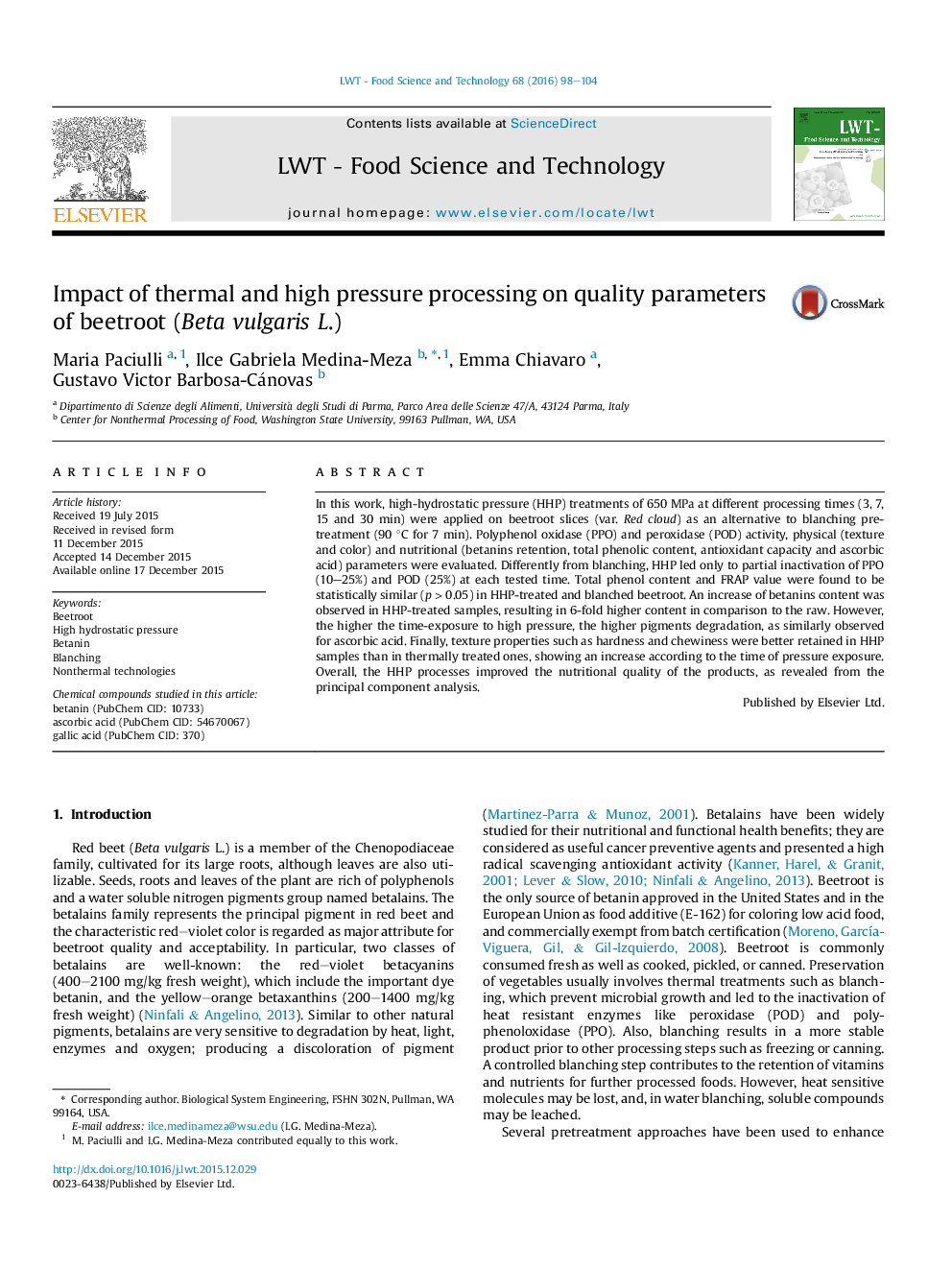| Article ID | Journal | Published Year | Pages | File Type |
|---|---|---|---|---|
| 4563624 | LWT - Food Science and Technology | 2016 | 7 Pages |
•High hydrostatic pressure (HHP) at 650 MPa for different times was studied on beetroot.•Compared to blanching, with HHP higher enzymatic activities were recorded.•Compared to raw and blanching, betanin and ascorbic acid were better retained using HHP.•Better texture retention and lower redness were obtained increasing HHP exposition time.
In this work, high-hydrostatic pressure (HHP) treatments of 650 MPa at different processing times (3, 7, 15 and 30 min) were applied on beetroot slices (var. Red cloud) as an alternative to blanching pretreatment (90 °C for 7 min). Polyphenol oxidase (PPO) and peroxidase (POD) activity, physical (texture and color) and nutritional (betanins retention, total phenolic content, antioxidant capacity and ascorbic acid) parameters were evaluated. Differently from blanching, HHP led only to partial inactivation of PPO (10–25%) and POD (25%) at each tested time. Total phenol content and FRAP value were found to be statistically similar (p > 0.05) in HHP-treated and blanched beetroot. An increase of betanins content was observed in HHP-treated samples, resulting in 6-fold higher content in comparison to the raw. However, the higher the time-exposure to high pressure, the higher pigments degradation, as similarly observed for ascorbic acid. Finally, texture properties such as hardness and chewiness were better retained in HHP samples than in thermally treated ones, showing an increase according to the time of pressure exposure. Overall, the HHP processes improved the nutritional quality of the products, as revealed from the principal component analysis.
